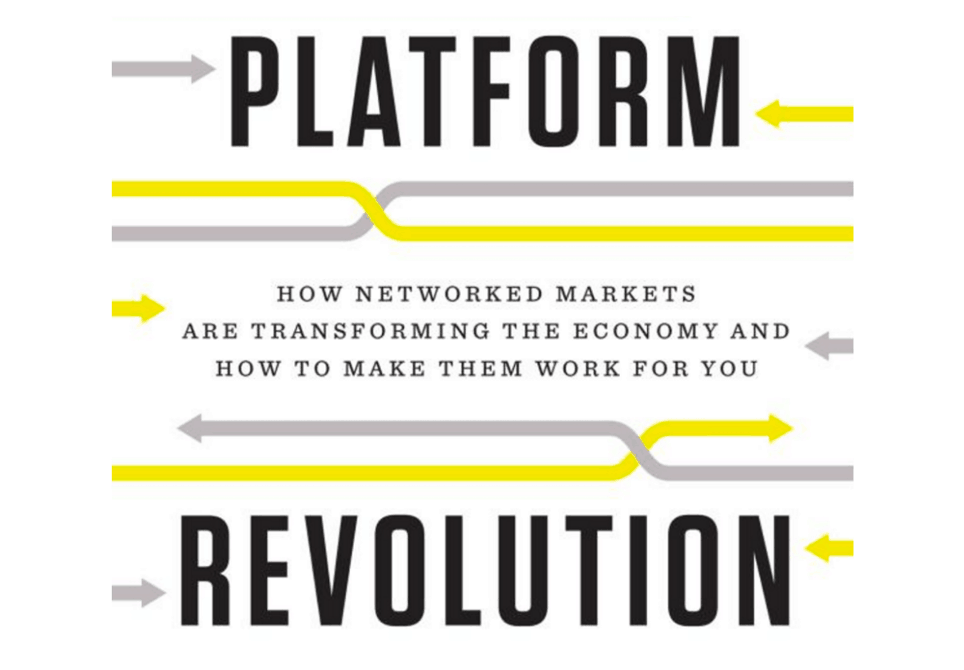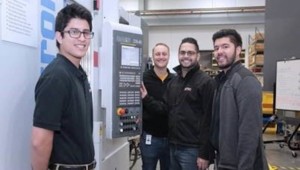Platforms Have Transformed the Economy. Is Education Next?

Academics Geoffrey Parker, Marshall Van Alstyne and Sangeet Choudary explore the Platform Revolution in their new book. Here’s how they define a platform:
A platform is a business based on enabling value-creating interactions between external producers and consumers. The platform provides an open, participative infrastructure for these interactions and sets governance conditions for them. The platform’s overarching purpose: to consummate matches among users and facilitate the exchange of goods, services or social currency, thereby enabling value creation for all participants.
Platforms like Uber, Airbnb, Facebook, Amazon and Alibaba have transformed consumer options and markets, but most of us don’t know much about how they work. This book details the key decisions that platform architects and operators make regarding governance, openness, startup, monetization and metrics.
What has caused the rise of platforms compared to those old-fashioned companies that actually make stuff? The authors claim platforms beat pipelines (think supply chains) because platforms:
- scale more efficiently by eliminating gatekeepers,
- unlock new sources of value creation and supply,
- use data-based tools to create community feedback loops, and
- invert the firm (users run the place and create the value).
Scale efficiently? Unlock value? How do these things happen? The authors suggest the secret is network effects.
Network Effects
If the platform gets better with each new user, it has positive network effects. Think more customers on a phone network (same-side effects) or more merchants accepting a new credit card (cross-side effects).
Large well-managed platform communities produce significant value for each user of the platform. Value can be driven by the power of social networks (can I get connected?), demand aggregation (can I buy stuff?) and app development (can I do stuff?).
Platforms promote exchanges and “in every exchange, the producer and the consumer exchange three things: information, good/services and some form of currency.” The ability to, in some way, monetize that value exchange is key to a scalable and sustainable platform.
Platforms are in the curation business; they match content and connections at scale. Most platforms use an algorithmic filter to screens out less valuable stuff. The authors suggest getting core interactions right is a function of a filter that helps match participants with some unit of value.
“Network effects turn organizations inside out,” meaning users run the place. Platforms are like “information factories” that have no control over inventory. They just attract and match to facilitate value exchanges.
Will Platforms Transform Education?
The sectors that usually join the platform revolution, according to the authors, are information intensive, fragmented and controlled by nonscalable gatekeepers that maintain information asymmetries. They conclude, “Education is perhaps the prime example of a major industry that is ripe for platform disruption.”
Platforms including Coursera, edX, Skillshare and Udemy have transformed informal learning and career education. Wikipedia and YouTube have made it possible for anyone to learn almost anything. The authors note that more people are using Duolingo to learn a language than all the students in the high school in the U.S. combined
Most higher education institutions have adopted a learning management systems (LMS). Blackboard, Canvas (Instructure), Brightspace (D2L) and Moodle account for more than 80% of the market. Adoptions may have boosted efficacy and perhaps efficiency, but most have been well short of transformational. LMS adoptions have not dramatically changed price, access or quality of higher education.
Platforms are changing the EdTech landscape. The authors observe that companies are finding themselves struggling to make sense of new competitive threats posed by unexpected, often counterintuitive rivals (e.g., HMH doesn’t fear McGraw-Hill as much as it fears Amazon).
The authors speculate that it will be new models that support the “platform-based unbundling of education activities in separating the teaching of specific skills from reliance on vast, multipurpose institutions like traditional universities.” They also predict that many of the 3,000 U.S. colleges and universities will be undercut by vastly better economics of platforms.
LMS have lower penetration in K-12 (particularly elementary), but lightweight tools like Edmodo and Google Classroom are widely used, and uptake has rapidly accelerated in the last two years with widespread adoption of inexpensive Google Chromebooks.
Like higher education, most K-12 platform deployments are examples of ‘technology integration’ rather than transformation. They facilitate textbook replacement and open content utilization. Strong deployment support personalization and extend learning.
The authors blame the lack of progress in education to over regulation, But (as discussed in February) it’s not just the bureaucracy that makes education different. There are two critical factors that make education different from consumer internet: compulsoriness and intermediation.
First, most of formal education is compulsory (i.e., for degree, not for me). Required use (by teachers) and required participation (by students) probably dampens the perceived need for high engagement experiences and environments. Teachers and students often put up with weak tools compared to tools they choose for personal use.
For driven professionals, goal-directed behavior may take the place of compulsory requirements allowing them to slog through flat sequential online courses. But the autodidacts among us are few, for most people learning is relational (it happens in community). Which brings us to the second difference: education is by its very nature an intermediated enterprise.
New products create new opportunities, but learning communities must adopt new tools, design and deploy new learning experiences. Transformation requires reconceptualized learning experiences matched with platform capabilities. Networks simultaneously innovating on learning experiences and platform include AltSchool, Brooklyn Labs, Summit Public Schools, New Tech Network and College for America. As noted in December, it’s likely to be these platform-centric networks that will bring the promise of platforms to scale. They combine shared goals and culture, powerful tools and a support ecosystem.
While some of the policy and privacy discussions are informative for a general audience content, Platform Revolution is most useful as an “owner’s manual” for creating a successful platform business.
For more, see:
- EdTech’s Role in Ensuring Data Privacy
- What EdTech Can Learn From the Grocery Store
- 5 Interesting and Innovative EdTech Startup Ideas
Stay in-the-know with all things EdTech and innovations in learning by signing up to receive the weekly Smart Update. This post includes mentions of a Getting Smart partner. For a full list of partners, affiliate organizations and all other disclosures, please see our Partner page.








0 Comments
Leave a Comment
Your email address will not be published. All fields are required.